Towel Rails - The Ultimate Guide
Welcome to our comprehensive and helpful guide, where you will find everything, you need to know about heated towel rails. We'll walk you through the entire process of selecting, purchasing, and installing a heated towel rail so you can get the perfect size, style, and finish for your space.
You'll also learn some important maintenance tips that will help you extend the life of your heated towel rail and keep your heating system running smoothly for years to come!
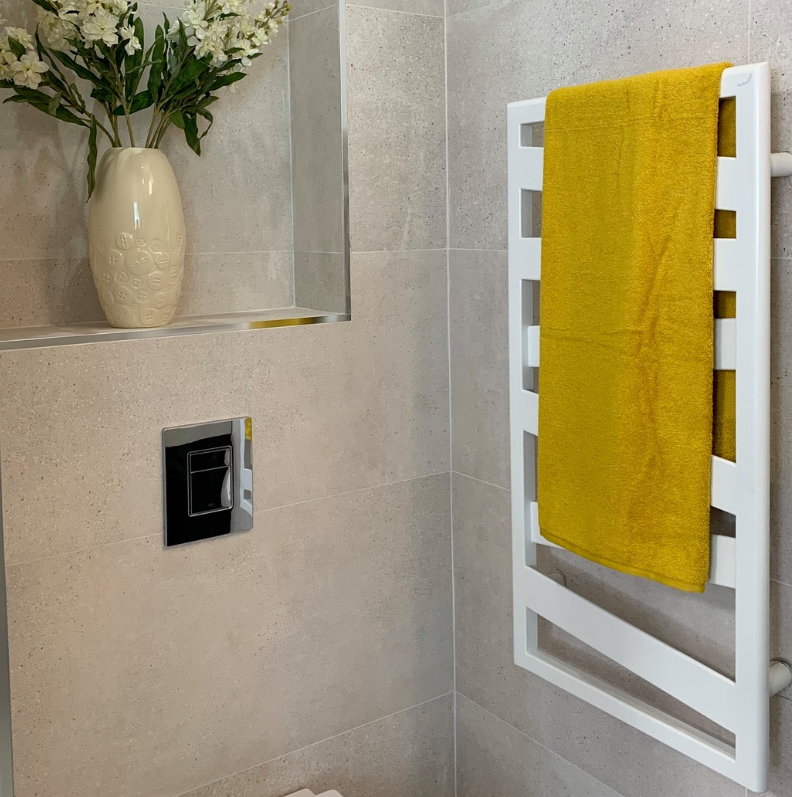
@bathroominspirationsdorset
Types of Heating
The type of heated towel rail you need to install in your home is determined by the type of heating system you have.
The three main types of heating in UK homes are discussed below. This ensures that you select a towel rail that works with your heating system.
Central Heating
In the UK, this is the most common type of heating system.
A gas boiler connected to a thermostat powers a central heating system. The boiler heats water and then circulates it through a network of pipes into your radiators, which produce heat.
A 'standard' heated towel rail is required with a central heating system. Standard heated towel rails, like regular radiators, are connected to your central heating system and have hot water flowing through them to keep them warm.
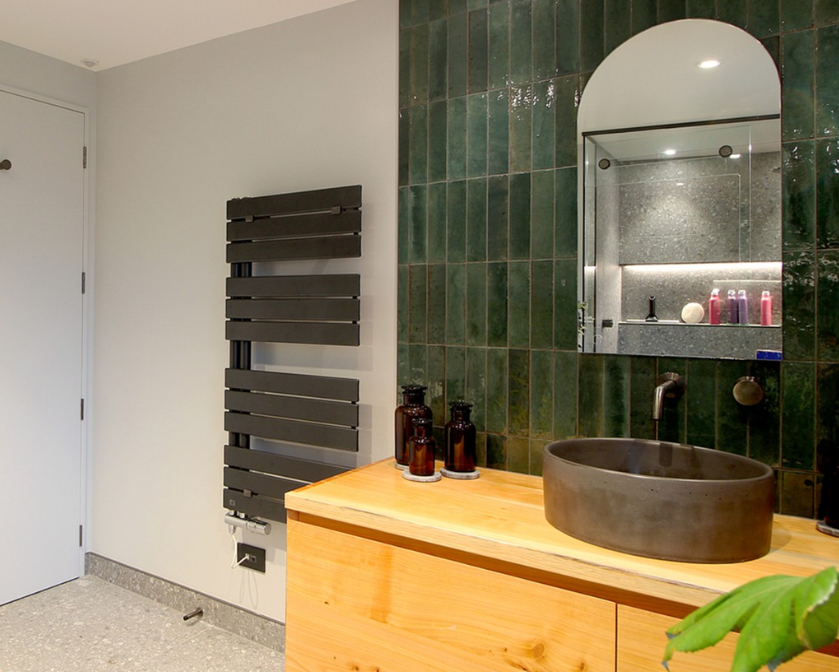
@centralheatingnz
Electric Heating
Electric heating systems, as opposed to gas boilers, are powered by the mains electrical supply. Each radiator or towel rail may be turned on separately as needed.
You'll need an 'electric' heated towel rail if you have an electric heating system. A trained electrical engineer should install and connect this sort of towel rail.
When purchasing an electric heated towel rail, you may select between non-thermostatic/single heat (the temperature remains constant) and thermostatic/variable heat (you can adjust the temperature settings). A heated towel rail with temperature options is often significantly more costly.
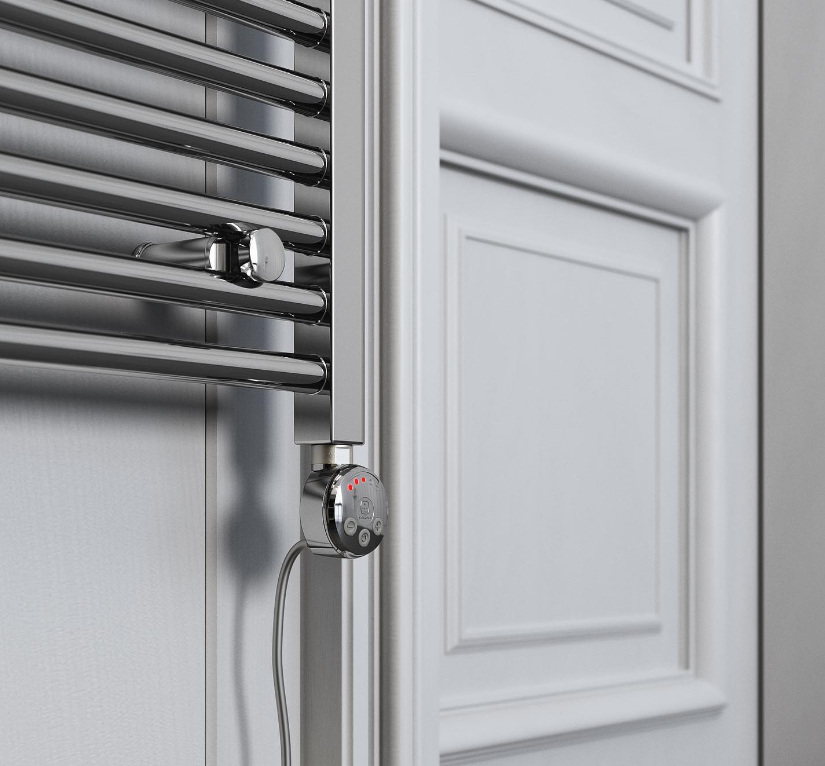
@terma_radiators_uk
Dual Fuelling
A dual fuel heating system combines the two technologies discussed above. It allows you to run your heating system using either a traditional, gas-powered central heating system or the mains electrical supply.
While installing dual fuel heated towel rails in bathrooms, en-suites, or kitchens is rare, many individuals do.
A dual fuel heated towel rail gives you the option of running independently of the central heating system. This is especially beneficial in the summer, when turning on your central heating would be costly and unneeded, but you still want to be able to dry your towels after washing them. Simply turn on the towel rail at the mains and it will function on electricity.
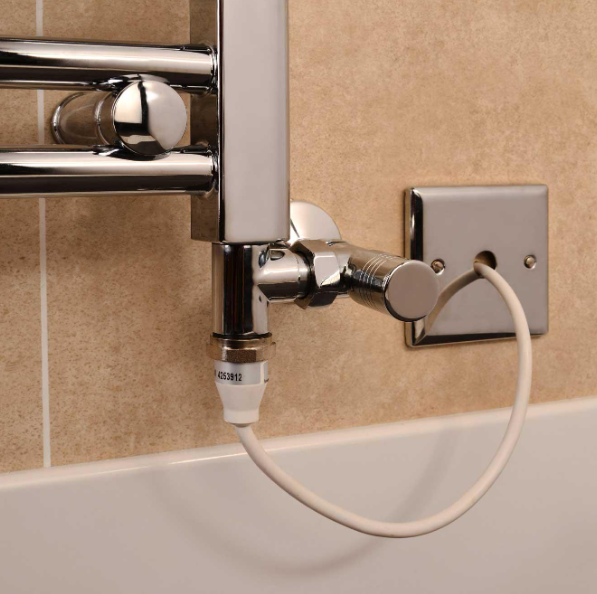
Dual Fuelling Heating System
Finding the Right Size for your Heated Towel Rails
Before you select the type and finish of your heated towel rail, you should consider the size of towel rail you require for your room. This will obviously be decided by the available area and the required heat output for your room.
Heated towel rails typically range in size from 600 to 1800mm in height and 400 to 1000mm in width. Other dimensions to consider are the projection (the distance between the towel rail and the wall) and the pipe centres (the distance between the inlet and outlet pipes).
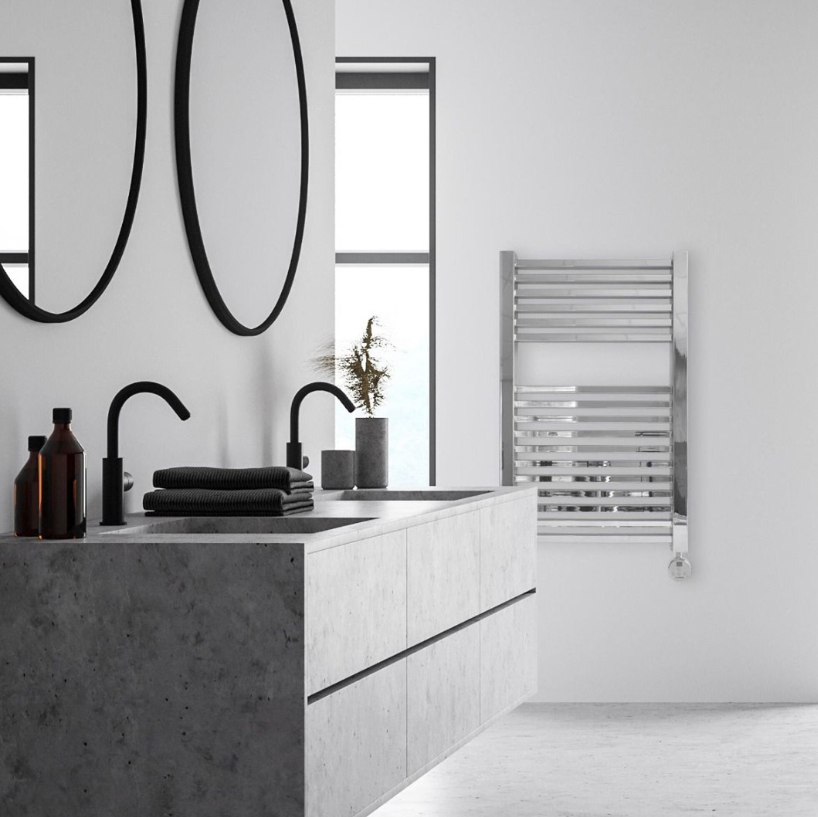
@electricradiatorsdirect
Choosing a Heated Towel Rail Style
Choosing the sort of heated towel rail you would like to install in your house is often the most exciting aspect of the process for many individuals.
If this is your first voyage into the world of heated towel rails, you may be pleasantly surprised by the selection available. We've broken down the most common varieties to help you choose the finest heated towel rail for your house.
Ladder Towel Rails
In the United Kingdom, ladder-style heated towel rails are the most common and popular type of towel rail.
Ladder rails, known for their aesthetic simplicity, have effortlessly transformed from 5-star hotels into bathrooms across the country, resulting in a large range of sizes available.
Ladder heated towel rails are not only functional, but they also look great in any place where they are put, including bathrooms, en-suites, and, increasingly, kitchens.
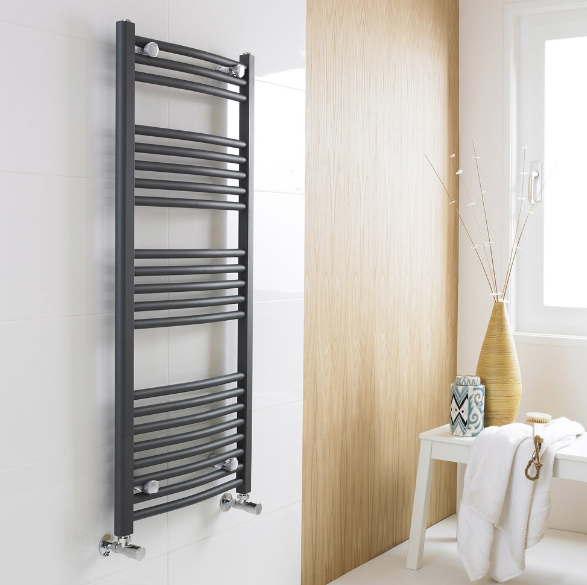
Black Ladder Towel Rail
Horizontal Towel Rails
Heated towel rails are commonly thought to be exclusively available in vertical orientation, although this is not the case.
Not everybody has the space to install a vertical ladder towel rail, especially when working with small bathrooms, en-suites, and downstairs toilets. As a result, horizontal heated towel rails really come to life in these sorts of rooms when space is at a premium and serve a very useful purpose. Horizontal radiators are very common for use behind bathroom windows or cabinets.
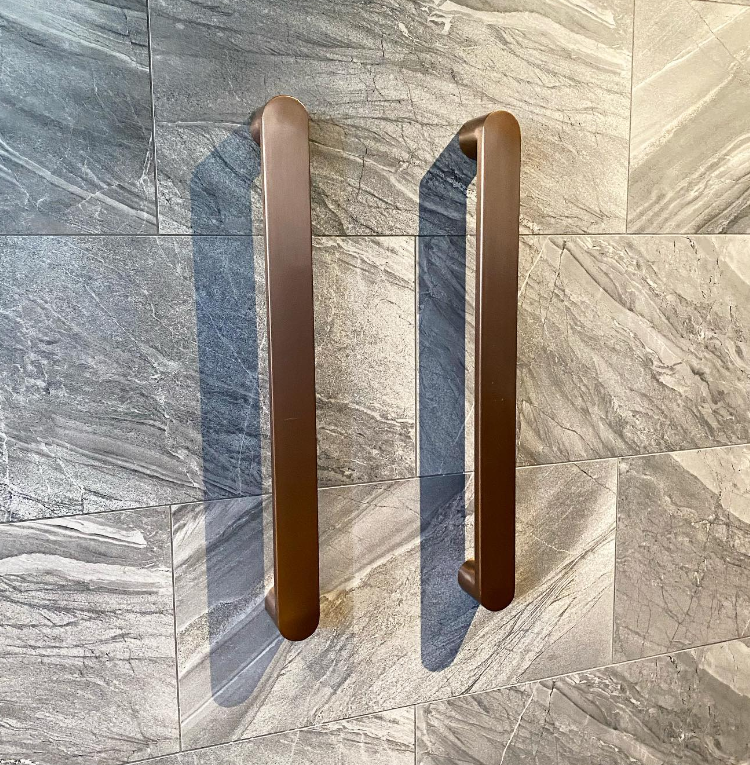
@ferg_build
Curved Towel Rails
The curved heated towel rail is another popular form of rail that provides a creative twist on the ladder-style.
The smart design is best seen in profile, as the horizontal bars curl outwards.
Curved heated towel rails have become more popular recently because the bend of the bars allows for more room behind the rails. This makes it easy to tuck and hang thick towels, ensuring that they are dry and heated evenly every time.
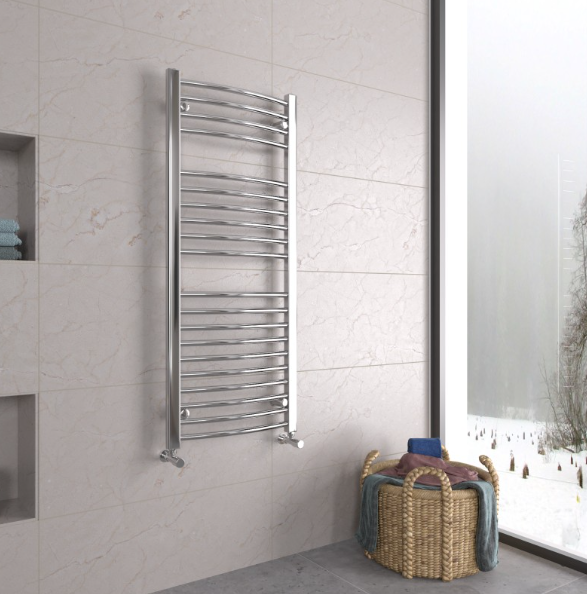
Curved Towel Rail
Traditional Towel Rails
The traditional towel rail is an option worth considering if you have a historic house or just want to add some domestic charm into your bathroom.
As well as providing some rustic charm, traditional heated towel rails are also very practical in nature.
The traditional towel rail, which is the most like a regular radiator, provides a significant heat output due to its wide chamber. The chrome heated bar across the top provides ample space for a towel, giving your bathroom the best of both worlds.
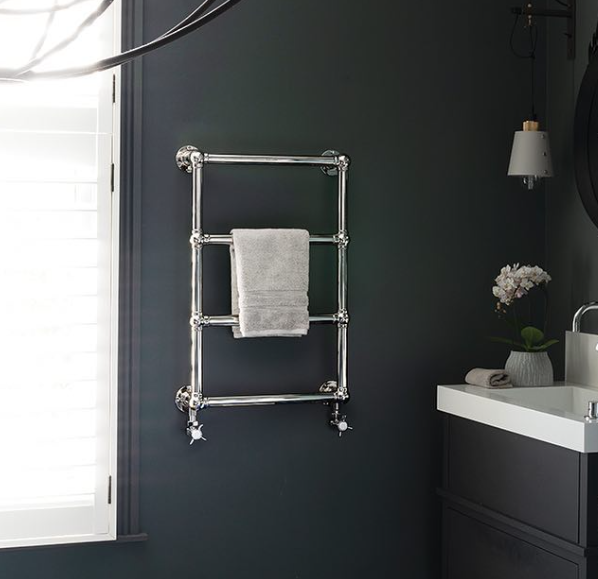
Traditional Towel Rail
Designer Towel Rails
Look no further than the wide range of design heated towel rails for individuals on a tighter budget who want to attain a high-end, luxurious finish.
Designer towel rails not only look great in high-end homes, but you may also find innovative designs that are not accessible at lower price ranges.
Designer heated towel rails require an incredible number of sophisticated craft and creativity.
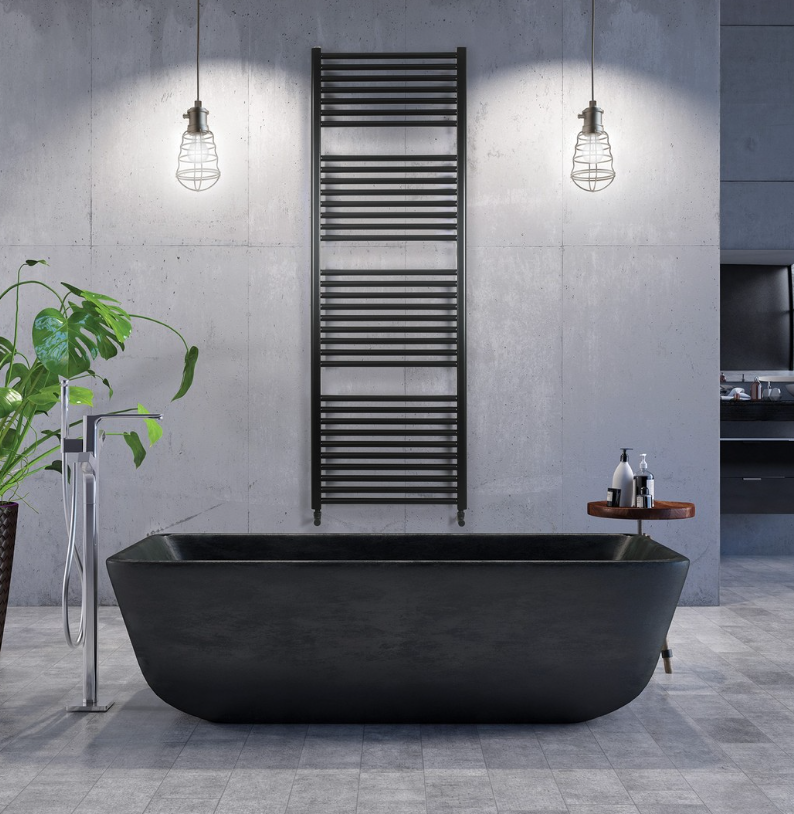
@dimension_bathrooms_kitchens
Choosing a Colour and Finish
Heated towel rails are available in a wide range of colours and finishes, so take your time when choosing what you want. With such a wide number of options, you can easily create a genuinely unique design for your bathroom or kitchen.
Mild steel with a chrome or powder coat finish is the most used material in the production of heated towel rails. These sorts of towel rails are highly popular and tend to be the most cost-effective alternative.
It's also possible to buy stainless steel towel rails manufactured of 304-grade stainless steel, which is a high-quality and long-lasting material that tends to be on the higher end of the price spectrum.
Popular Towel Rail Colours
Anthracite - A charcoal colour with a hint of shimmering silver, anthracite heated towel rails have become a popular choice for people looking to give their bathrooms and ensuites a modern feel.
White - Another colour that can't go wrong, white heated towel rails are ideal for anybody looking to create a calm and clean minimalist bathroom. White towel rails complement white bathroom sets perfectly.
Black - With monochromatic bathrooms becoming increasingly popular, black heated towel rails stand out against white walls and bathtubs. Black rails look fantastic with stone, slate, and other earth tones.
Silver - Whether in the family bathroom, a downstairs toilet, or the kitchen of a granny annex, silver towel rails will add a touch of class to the space. Silver is a versatile colour that can be used in a variety of settings.
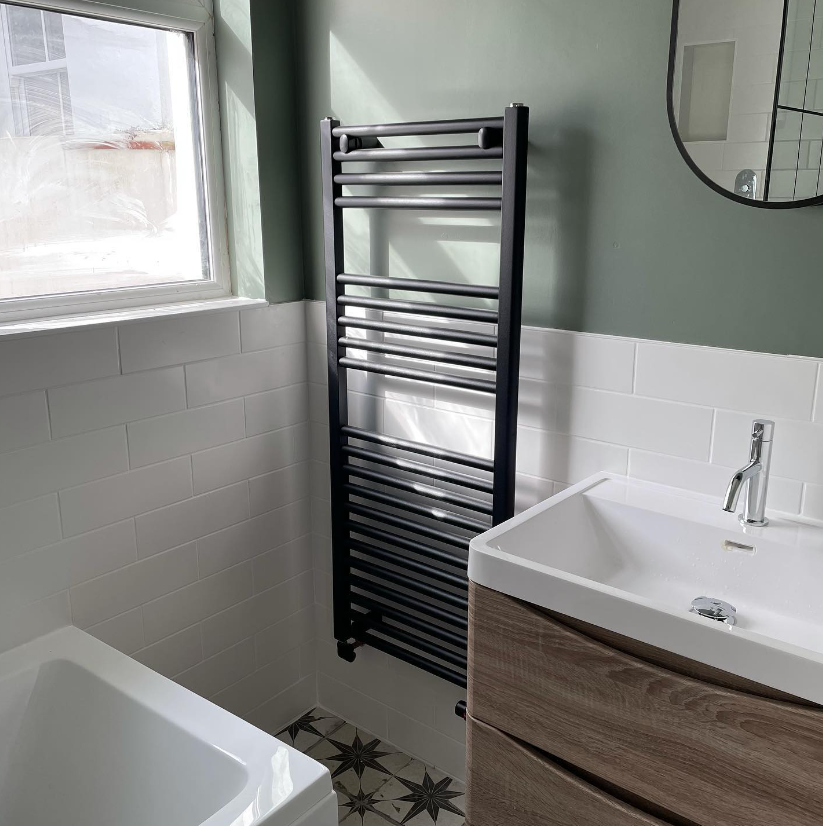
@drench.co.uk
Popular Towel Rail Finishes
Polished - Nothing beats the mirrored finish of a good, clean polished heated towel rail for the ultimate in refinement. A polished surface is typically associated with stainless steel rails, which have the unusual tendency to seem shinier as they are brushed.
Chrome - The most popular type of finish is a chrome heated towel rail, which is the first option for most individuals upgrading their bathrooms. Because other fixtures such as taps, light fixtures, and shower heads are chrome plated, a matching towel rail is always a great option.
Satin - Also known as a brushed finish, satin heated towel rails are handcrafted and have a somewhat subdued appearance when compared to chrome. Satin rails look great in kitchens, especially when paired with brushed stainless-steel kettles, toasters, and hobs.
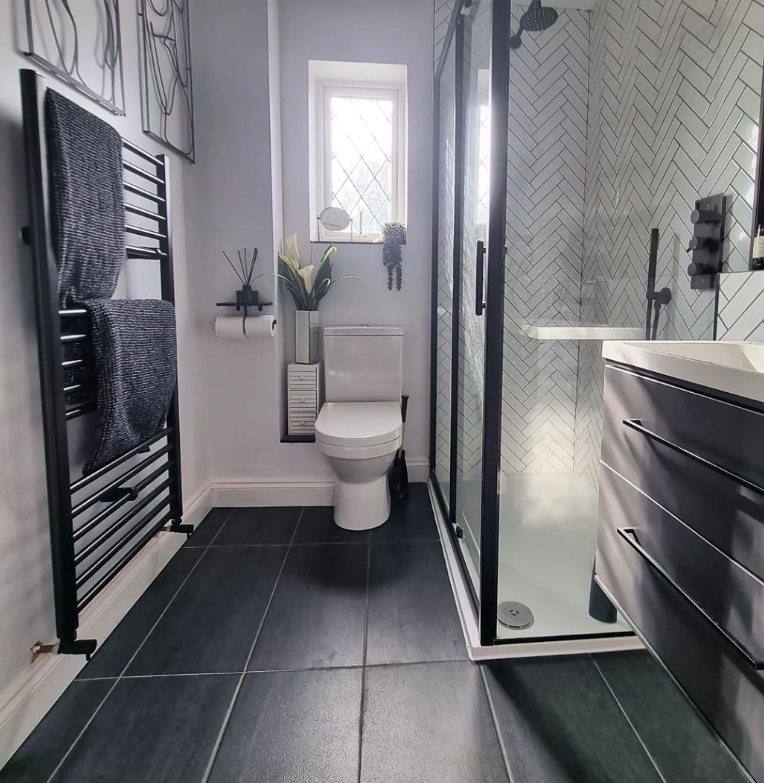
@elwell_home
Are heated towel rails expensive to run?
Electric heated towel rails function similarly to any other electric heater, with the valve being switched on and off. These rails save the need to turn on the remainder of your central heating, but they can be costly to operate due to the power needs of the heated element within.
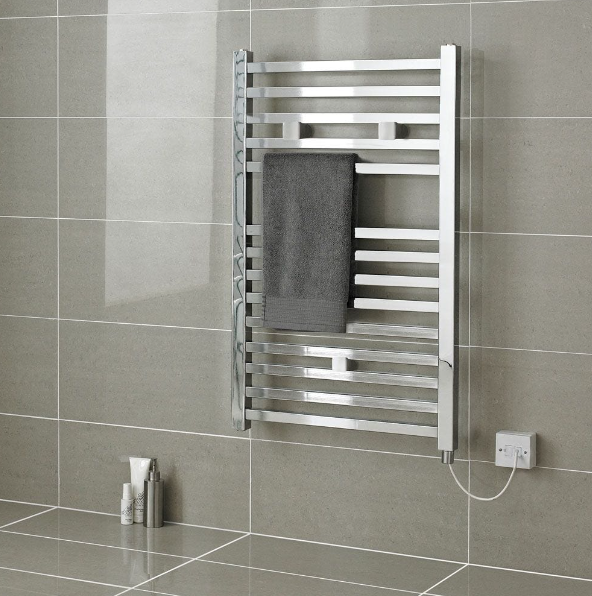
@electricradiatorsdirect
How do electric towel rails work?
An electric towel rail is powered by the power grid and generally includes an on/off fuse switch nearby. This means that, unlike a piped system, which would most likely turn on and off according to a schedule, your electric rail will have to be regulated manually. When your heating is turned off, your plumbed towel rail will turn off automatically.
How do heated towel rails work?
Heated towel rails are often connected to a central heating system. The towel rails in this system are heated at the conclusion of the process of running hot water through them. As a result, this offers heating for your home. The functioning of the boiler and the maintenance of the temperature of the water inside provide heat for the home.
How do I turn on a towel rail?
You will first
need to turn off the towel radiator, so to do this you should switch off the
central heating system first and then let the towel radiator to cool. Turn the
valves in the direction you would normally turn them to reduce the temperature.
When you can no longer turn the radiator, it should be turned off. Restart your
central heating system to check you haven't accidentally switched it off. If
your towel radiator does not heat up as it usually does, it has been
successfully turned off.
To then turn it back on, flip the valve in the other direction and ensure it
achieves the required temperature when the heating is turned on.
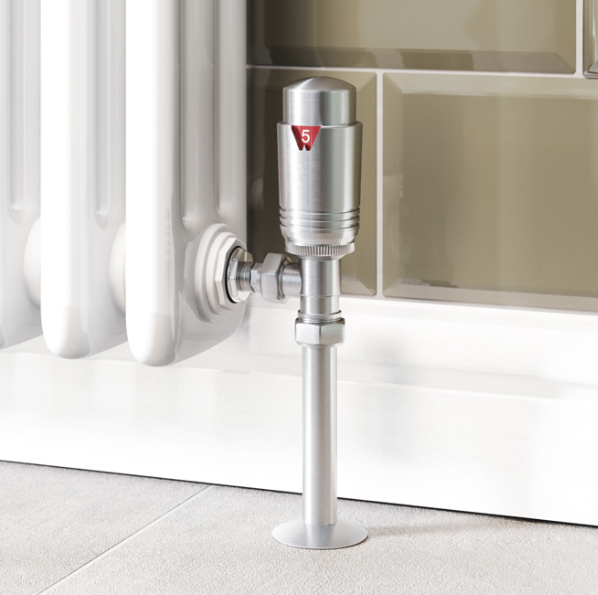
http://www.makeone.org/which-way-to-turn-towel-rai...
Which way to turn towel rail valves?
You must open the lockshield valve when the system has cooled. Simply turn the valve anti-clockwise to accomplish this (to the left). If your valves are stiff, use your lockshield valve key, a spanner, or the wheelhead valve cap instead.
Should towel rail valves be fully open?
A conventional heated towel rail or towel radiator is designed to work with a central heating system; with the valve completely open, the maximum quantity of hot water enters the radiator, heating it to the temperature set for the entire central heating system.
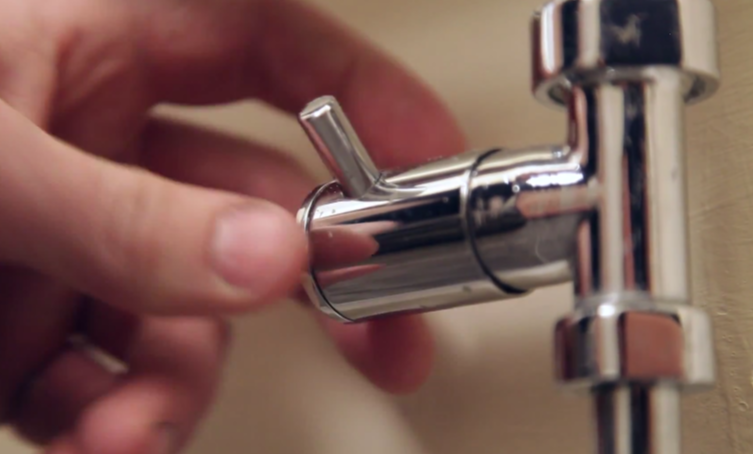
https://www.bestheating.com/info/how-to-remove-a-h...
Towel Rail Accessories You May Need
Our heated towel rails include everything you need to install and secure them to the wall. However, there are certain other accessories you should think about to get the most out of your towel rail.
Valves - If you have a traditional central heating system, you will need a pair of radiator valves to connect your heated towel rail to the piping of your heating system.
Heating Element - If you have an electric or dual fuel towel rail, you will need to choose a heating element. You may choose between single and variable heat elements, as well as smart controls.
Rail Hangers - If you need more towel hanging space, you may buy additional hangers or hooks that fit beautifully into your heated towel rail for added versatility.
Tail Extensions - Radiator tail extensions are required when a radiator cannot be properly attached to the pipes. The normal radiator connection in the UK is 15mm, however some older pipes are smaller. Tail extensions are a straightforward solution to this issue.
Chemical Inhibitor - An inhibitor aids in the prevention of corrosion in typical central heating systems. The valve on a hot towel rail is the simplest way to replenish your inhibitor levels.
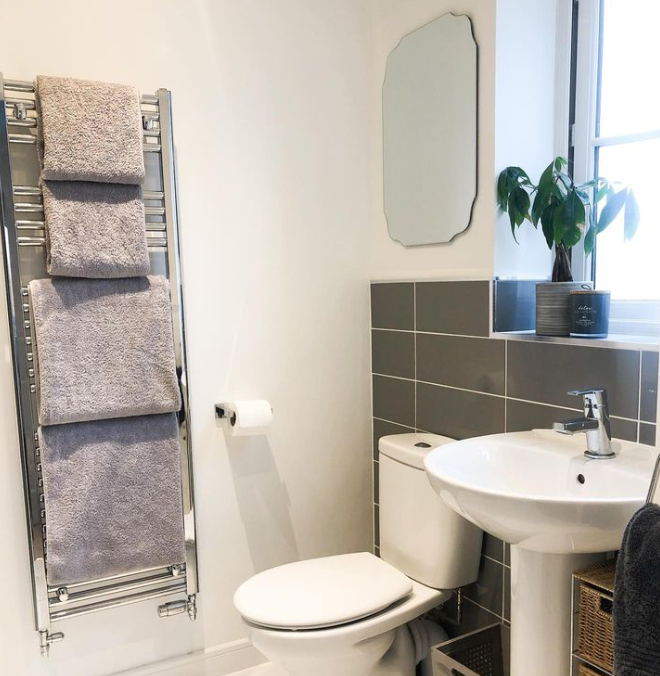
@behindthedoorat37
That concludes our Ultimate Towel Rail Guide! If you want to learn how to bleed, clean, or even install a radiator, we have three blogs on our website that will take you through a very thorough and helpful guide!
And, lastly, if you have any more questions about towel rails, or would just like to discuss your options with our friendly team, you can contact our customer services team on the number 01472 907051
Recent Posts
-
Garage conversion ideas to maximise your space
You’ve got a garage but you park on the drive and really need more living space – we&rsq
-
Garden Gate Buying Guide
Is your next project adding a garden gate to enhance, protect and secure your garden? Before you do

